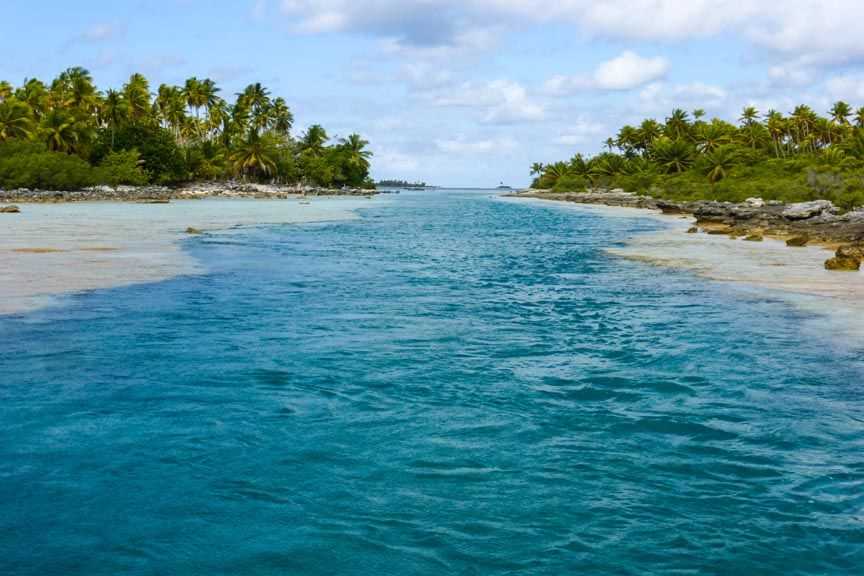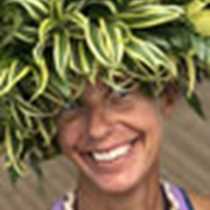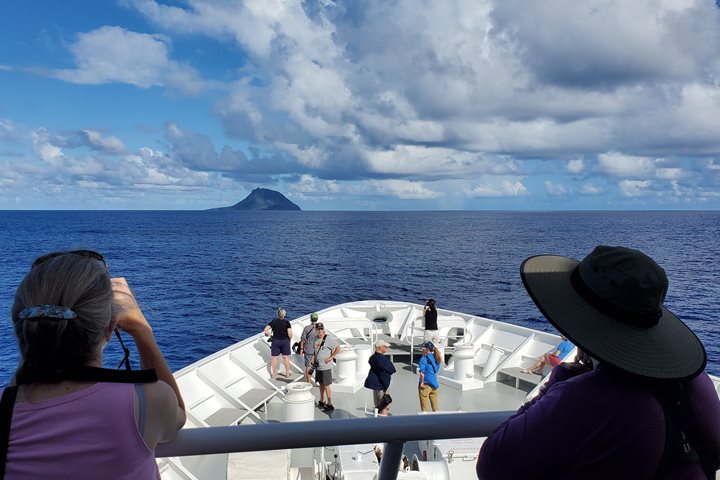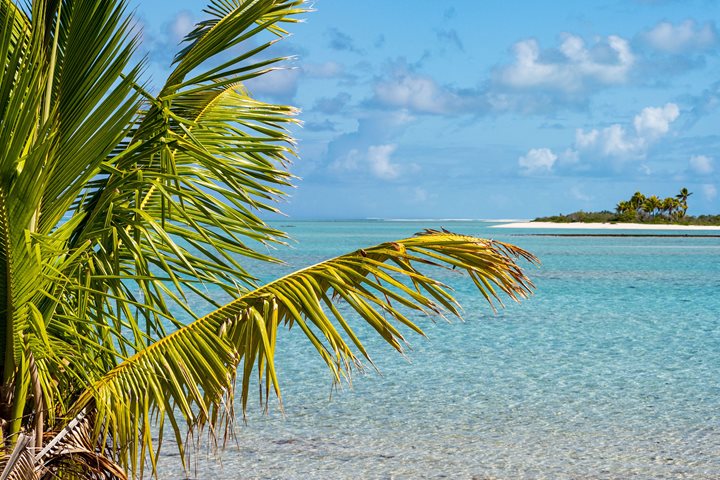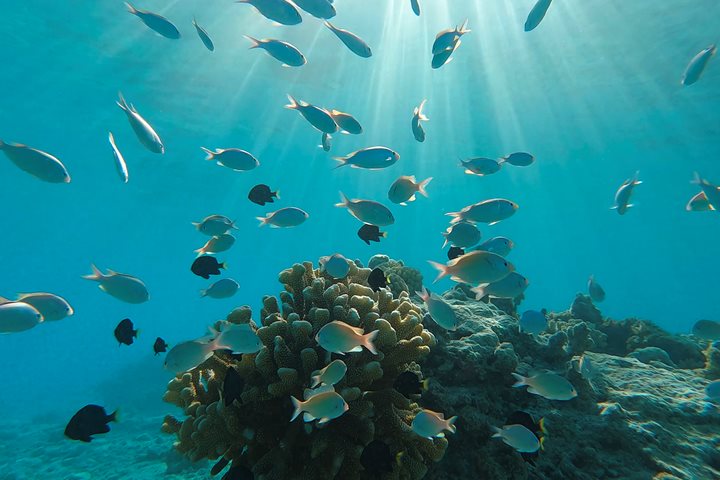This morning National Geographic Orion anchored off Raroia Atoll. Following in the steps of explorer Thor Heyerdahl, this atoll played a significant role in the Kon-Tiki expedition as it is the site where the balsa raft landed after 101 days at sea. While the settlement of the Pacific island by “drift voyaging” was extremely unlikely, the 4300-mile long journey was quite a feat and an adventure. Dropping the Zodiacs, the expedition team scouted the pass for a potential drift snorkel. We could not have had better conditions for this activity. Once in the water we drifted gently along a reef close to shore, and amongst black-tipped sharks who enjoyed the plethora of fish that make this part of the Pacific their home. Some opted to go on land where they met an incredible couple (Kiri and Mako) who have been living on the atoll for the last 20 years. Conservationists in their own right, their home was a sanctuary of sorts for coconut crabs and nesting terns. An incredible encounter to see how two people can survive and thrive living so remotely.
After lunch we relocated to Takume Atoll and explored the incredibly narrow pass (and only access) into the lagoon. An old church behind palm trees caught our eye as we were enthralled by the narrow channel and fish traps along the edge. Fifty years ago, almost 2/3 of the population of Raroia migrated to Takume during the pearl diving season where they could collect 50-100 kilos of shells a day. Prices for the shells varied between 30 and 45 francs a kilo, and a good diver could have earned around 200,000 francs ($3,175 dollars) during a season. The base and regular source of income on these atolls has largely been copra (coconut oil). While one would assume that coconut palms were prolific from the beginning, according to early European observations, there were very few coconut trees, and on uninhabited atolls none at all. The first traders who visited the islands were largely interested in sea cucumbers, shells, and pearls but gradually encouraged the natives to plant more palm trees and even brought them sprouting nuts from Tahiti. In the early 19th century, missionaries and colonists began to establish coconut plantations for copra cultivation to meet the increasing demand for oil in Europe. Walking on cemented coral reef conglomerates we explored the atoll and found some huge blue land crabs (aka tupa, cardisoma sp) which were considered to be messengers of the spirits, and were never killed anywhere near marae sites. Further down the hoa (shallow channel) we found sea cucumbers which are the ecological equivalent of earthworms. Their mouths clearly visible, we could see tentacles derived from modified tube feet at one end that they were using to feed on organic particles. Once sought after by the Chinese (as an aphrodisiac) the Polynesians would harvest, boil, and dry for export, but now this important echinoderm is protected from harvest.

